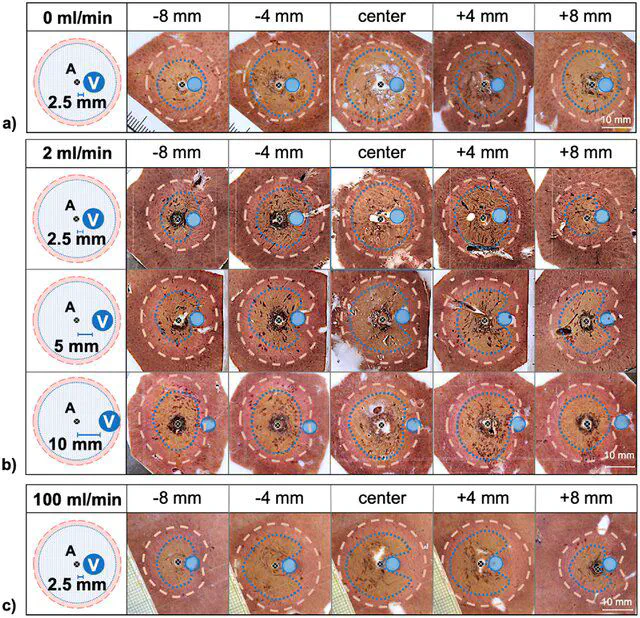Three-dimensional assessment of vascular cooling effects on hepatic microwave ablation in a standardized ex vivo model
Oct 12, 2022·
,
,
,
,
 ,
,
,
,
,
,
,
,
Christina A. Neizert
Hoang N. C. Do
Miriam Zibell
Christian Rieder
David Sinden
Stefan M. Niehues
Janis L. Vahldiek
Kai S. Lehmann
Franz G. M. Poch

Abstract
The aim of this study was a three-dimensional analysis of vascular cooling effects on microwave ablation (MWA) in an ex vivo porcine model. A glass tube, placed in parallel to the microwave antenna at distances of 2.5, 5.0 and 10.0 mm (A–V distance), simulated a natural liver vessel. Seven flow rates (0, 1, 2, 5, 10, 100, 500 ml/min) were evaluated. Ablations were segmented into 2 mm slices for a 3D-reconstruction. A qualitative and quantitative analysis was performed. 126 experiments were carried out. Cooling effects occurred in all test series with flow rates ≥ 2 ml/min in the ablation periphery. These cooling effects had no impact on the total ablation volume (p > 0.05) but led to changes in ablation shape at A–V distances of 5.0 mm and 10.0 mm. Contrary, at a A–V distance of 2.5 mm only flow rates of ≥ 10 ml/min led to relevant cooling effects in the ablation centre. These cooling effects influenced the ablation shape, whereas the total ablation volume was reduced only at a maximal flow rate of 500 ml/min (p = 0.002). Relevant cooling effects exist in MWA. They mainly depend on the distance of the vessel to the ablation centre.
Type
Publication
Scientific Reports